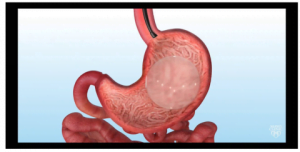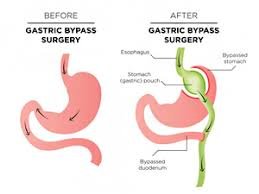Endoscopic sleeve gastroplasty is a weight loss procedure that uses an endoscopic suturing device to reduce your stomach size. The procedure recreates what would happen without the need for surgery at a surgical sleeve gastrectomy.
This procedure is ideal for those with a 30 or more body mass index and those who have not worked alone with diet and exercise. Since the procedure is minimally invasive, the possibility of complications is minimized.
Nevertheless, a dedication to a healthier lifestyle, like other weight loss programs, will help ensure long-term success and successful weight loss. Including weight loss, endoscopic sleeve gastroplasty can also lower the blood sugar and resolve other significant weight-related issues.
ESG decreases the size of the stomach by using an endoscopic suturing device inserted into the throat to put plissed sutures in the stomach causing it to constrict as an accordion.
The lead author of the study, Reem Z. Sharaiha, MD, MSc, assistant professor of medicine at Weill Cornell and Medicine at the New York-Presbyterian / Weill Cornell Medical Center, described it as “a day in the endoscopy suite” that leaves “no bruises from the outside and no wounds.”
Lead study author Reem Z. Sharaiha, MD, MSc, assistant professor of medicine at Weill Cornell Medicine and attending physician at New York-Presbyterian/Weill Cornell Medical Center, described it as “a day procedure done in the endoscopy suite” that leaves “no scars from the outside and no cuts.”
HOW THE PROCEDURE TAKES PLACE
Unlike traditional bariatric surgery, which requires cutting through the skin and tissue to
alter or remove parts of the body, few incisions are made during endoscopic sleeve gastroplasty.
A flexible pipe called an endoscope fitted with a mechanical suturing device is inserted through the mouth during this process and threaded down the esophagus to the stomach as seen above.

The suturing tool sews three rows of stitches once in the belly, as seen above right. Then the stitches are pulled into a sleeve’s shape, limiting the stomach-like pouch. A normal stomach in the top left is shown; a stomach in the endoscopic sleeve in the top right after gastroplasty.
HOW IT WORKS
The stitches are then pushed into a sleeve shape, limiting the pouch-like belly. A healthy
stomach is shown on the top left; a stomach in the endoscopic sleeve on the top right after gastroplasty.
The smaller size of the stomach limits how much you can eat, giving you the pleasure of feeling full sooner and longer. Vertical sleeve gastrectomy produces the smaller size of the stomach by surgically removing about 85% of the abdomen.
Nevertheless, with endoscopic sleeve gastroplasty, the width of the stomach is decreased by inserting sutures in the stomach and then drawing them tightly together to absorb parts of the stomach.
Since the procedure is minimally invasive, there is a reduction in both the risk of surgical
complications and the recovery time.
Endoscopic Sleeve Gastroplasty (ESG)
Endoscopic sleeve gastroplasty (also known as an endoscopic sleeve of the stomach) is a procedure similar to gastric sleeve surgery but non-surgical. The entire ESG procedure is done through the mouth with no incisions needed. Your doctor uses this procedure to reduce your stomach’s size and volume to much less than its original capacity.Endoscopic sleeve gastroplasty provides a safe and effective option to patients who are not ideal candidates for surgery or who prefer a non-surgical approach.
WHAT HAPPENS DURING AN Endoscopic Sleeve Gastroplasty PROCEDURE
The doctor places an endoscope in your mouth while you’re asleep, which is advanced down the esophagus and into your stomach.A suturing tool is attached to the endoscope, allowing the placement of sutures to constrict the stomach in a specific pattern, resulting in a “sleeve” shape.
A sequence of sutures is then tightened, reducing the stomach’s maximum available size. Patients usually go home the same day or the next day after being admitted overnight. They are instructed to follow a specific diet for a short period of time. Once the size of the stomach of a person is restricted, he or she will eat smaller portions of food. The endoscopic sleeve may result in weight loss ranging from 40 to 60 pounds in conjunction with diet and exercise.
WHO IS A GOOD CANDIDATE FOR AN ESG PROCEDURE
The endoscopic sleeve gastroplasty (ESG) procedure was intended for patients with an obese BMI of more than 30 who are not ideal candidates for bariatric surgery, or who do not wish to do so.
The ESG for primary weight loss is one of the most effective endoscopic procedures. Patients lose an average of 40 to 60 pounds, or almost 20% of their body weight.Recent research has shown that the weight loss achieved can last more than two years with the ESG treatment.Other health problems caused by excess weight, including cholesterol, diabetes and high blood pressure, have also been shown to benefit the shirt.
The internal endoscopic surgery should be known as the ESG treatment. The risk of major complications associated with the endoscopic sleeve is very low (about 2%), but some patients may have abdominal pain,Nausea, nausea and constipation, and may need to be seen in the hospital overnight to manage symptoms.



